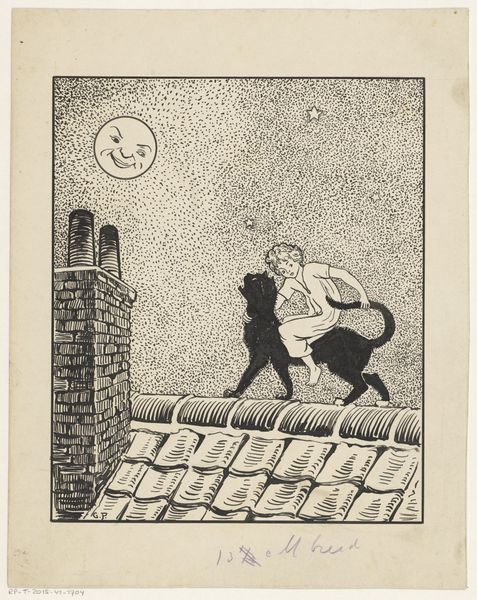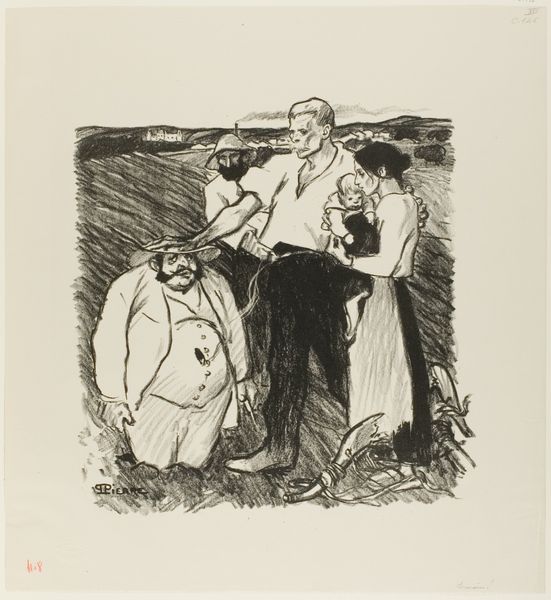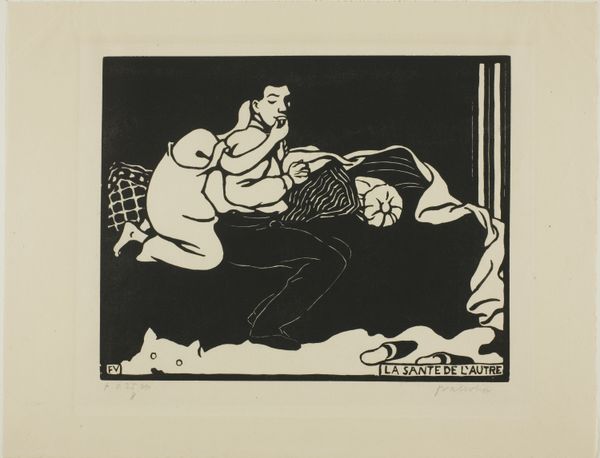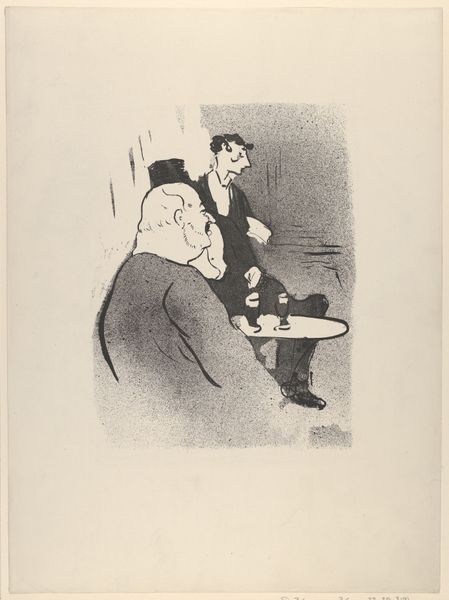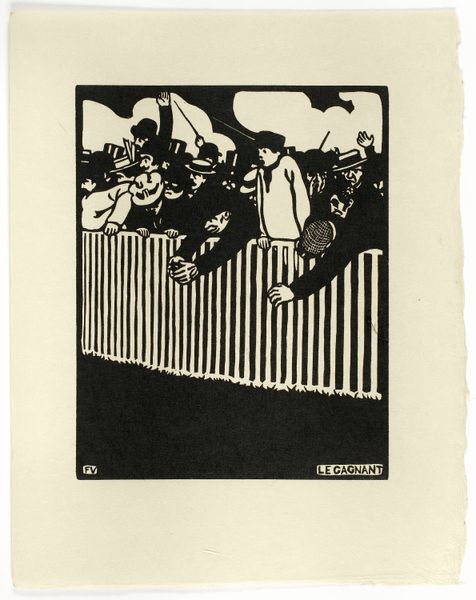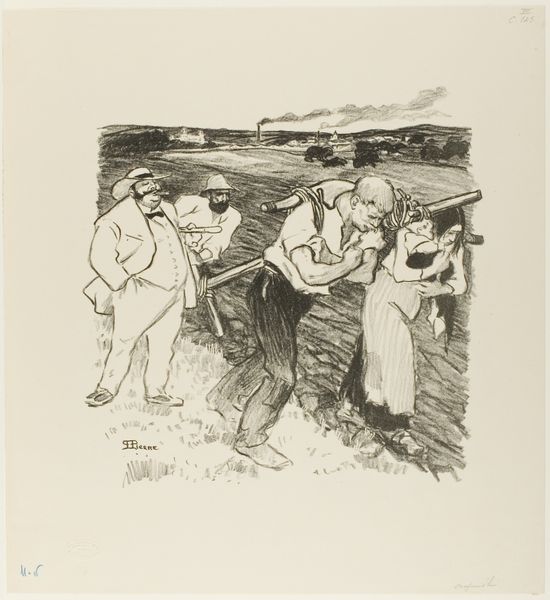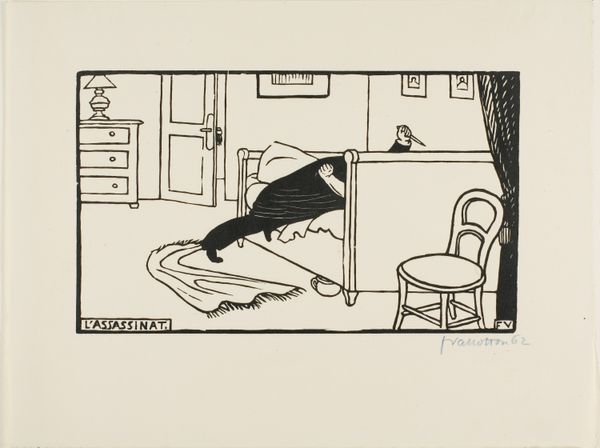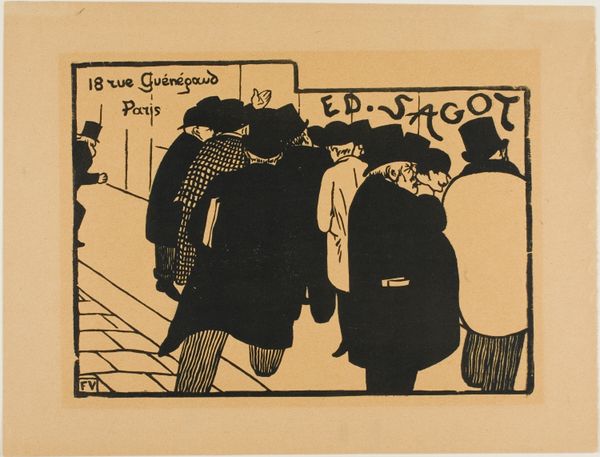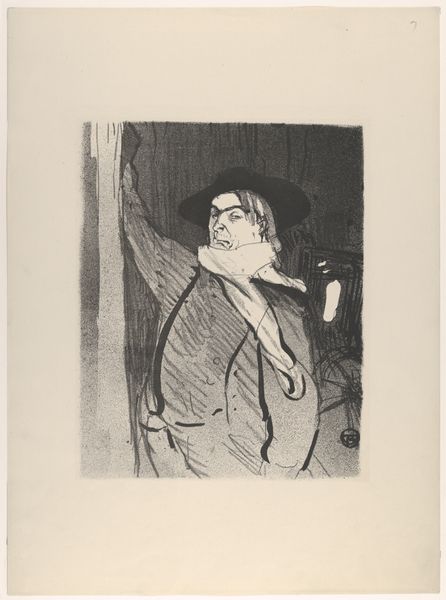
drawing, print, linocut, paper, woodcut
#
drawing
# print
#
linocut
#
paper
#
linocut print
#
woodcut
#
france
#
symbolism
#
monochrome
Dimensions: 225 × 181 mm (image); 324 × 252 mm (sheet)
Copyright: Public Domain
Curator: This linocut print, titled "A Tight Corner" or "Le Mauvais Pas" was created in 1893 by Félix Edouard Vallotton. What's your first reaction to it? Editor: Foreboding! The stark contrast, the huddled figures—it feels claustrophobic and filled with a sense of grim purpose. The starkness makes me think of the unsentimental realities of the time. Curator: Absolutely. Vallotton, known for his woodcuts, which he elevates with the medium. Looking at his practice, consider how this stark aesthetic may reflect broader debates around labor and mechanization in printmaking. Editor: The men wearing top hats really stick out to me. They emphasize societal roles and the performance of grief or duty. This is turn-of-the-century France. How does this portrayal of ritual and class interact? Curator: Indeed. The materials here – linoleum block, ink, paper – all are fairly easily accessible at the time and lend themselves well to reproduction. And while these social commentaries exist within a frame, the image could easily appear in a newspaper. Editor: It makes you wonder, is Vallotton critiquing the cold formalities of the upper class? Or maybe the inescapable nature of death, no matter your social standing? There's definitely a satirical bite to this image. Curator: Perhaps he's acknowledging the intersection of both. This imagery is directly produced through specific materials, the end result exists only because of the processes chosen. The marks of production themselves become signifiers. Editor: You're right. Even the monochrome palette emphasizes the weight of the social climate he inhabited. The lack of color simplifies it, makes it bold and unromantic. It invites critical discussion on how society deals with these uncomfortable rites of passage. Curator: Examining the materiality provides insight to its broader reach in disseminating critiques of societal issues. Editor: It is indeed, a stark reminder of the complexities of class, mortality, and the performative nature of grief that feels very pertinent. Curator: Agreed. Thanks for lending your thoughts on how this potent image can spark ongoing engagement, one that makes visible processes and material as vital parts of both production and historical understanding.
Comments
No comments
Be the first to comment and join the conversation on the ultimate creative platform.


